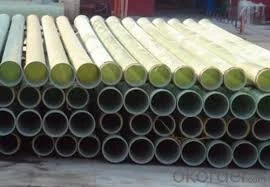
-
 Afrikaans
Afrikaans -
 Albanian
Albanian -
 Amharic
Amharic -
 Arabic
Arabic -
 Armenian
Armenian -
 Azerbaijani
Azerbaijani -
 Basque
Basque -
 Belarusian
Belarusian -
 Bengali
Bengali -
 Bosnian
Bosnian -
 Bulgarian
Bulgarian -
 Catalan
Catalan -
 Cebuano
Cebuano -
 China
China -
 China (Taiwan)
China (Taiwan) -
 Corsican
Corsican -
 Croatian
Croatian -
 Czech
Czech -
 Danish
Danish -
 Dutch
Dutch -
 English
English -
 Esperanto
Esperanto -
 Estonian
Estonian -
 Finnish
Finnish -
 French
French -
 Frisian
Frisian -
 Galician
Galician -
 Georgian
Georgian -
 German
German -
 Greek
Greek -
 Gujarati
Gujarati -
 Haitian Creole
Haitian Creole -
 hausa
hausa -
 hawaiian
hawaiian -
 Hebrew
Hebrew -
 Hindi
Hindi -
 Miao
Miao -
 Hungarian
Hungarian -
 Icelandic
Icelandic -
 igbo
igbo -
 Indonesian
Indonesian -
 irish
irish -
 Italian
Italian -
 Japanese
Japanese -
 Javanese
Javanese -
 Kannada
Kannada -
 kazakh
kazakh -
 Khmer
Khmer -
 Rwandese
Rwandese -
 Korean
Korean -
 Kurdish
Kurdish -
 Kyrgyz
Kyrgyz -
 Lao
Lao -
 Latin
Latin -
 Latvian
Latvian -
 Lithuanian
Lithuanian -
 Luxembourgish
Luxembourgish -
 Macedonian
Macedonian -
 Malgashi
Malgashi -
 Malay
Malay -
 Malayalam
Malayalam -
 Maltese
Maltese -
 Maori
Maori -
 Marathi
Marathi -
 Mongolian
Mongolian -
 Myanmar
Myanmar -
 Nepali
Nepali -
 Norwegian
Norwegian -
 Norwegian
Norwegian -
 Occitan
Occitan -
 Pashto
Pashto -
 Persian
Persian -
 Polish
Polish -
 Portuguese
Portuguese -
 Punjabi
Punjabi -
 Romanian
Romanian -
 Russian
Russian -
 Samoan
Samoan -
 Scottish Gaelic
Scottish Gaelic -
 Serbian
Serbian -
 Sesotho
Sesotho -
 Shona
Shona -
 Sindhi
Sindhi -
 Sinhala
Sinhala -
 Slovak
Slovak -
 Slovenian
Slovenian -
 Somali
Somali -
 Spanish
Spanish -
 Sundanese
Sundanese -
 Swahili
Swahili -
 Swedish
Swedish -
 Tagalog
Tagalog -
 Tajik
Tajik -
 Tamil
Tamil -
 Tatar
Tatar -
 Telugu
Telugu -
 Thai
Thai -
 Turkish
Turkish -
 Turkmen
Turkmen -
 Ukrainian
Ukrainian -
 Urdu
Urdu -
 Uighur
Uighur -
 Uzbek
Uzbek -
 Vietnamese
Vietnamese -
 Welsh
Welsh -
 Bantu
Bantu -
 Yiddish
Yiddish -
 Yoruba
Yoruba -
 Zulu
Zulu
High-Quality Fiberglass Pipe Insulation Fittings for Optimal Energy Efficiency
Understanding Fiberglass Pipe Insulation Fittings
In the world of construction and HVAC (heating, ventilation, and air conditioning) systems, maintaining temperature efficiency and energy conservation is of utmost importance. One of the key components in achieving these goals is the use of insulation, and fiberglass pipe insulation fittings play a critical role in this process.
Fiberglass pipe insulation is favored for its excellent thermal performance and resistance to moisture. It is made of glass fibers, which provide high insulation value, making it suitable for a wide range of applications, including residential, commercial, and industrial environments. However, effective insulation extends beyond just the pipes themselves; it includes fittings, which are often the weak points in an insulation system.
Importance of Fittings
When it comes to pipe insulation, the fittings—such as elbows, tees, and flanges—are critical as they are typically the areas where heat loss can occur. Installing fiberglass insulation on straight sections of pipe might be straightforward, but these fittings require special attention to ensure full coverage and effectiveness. If not properly insulated, these components can lead to significant energy loss, increasing heating and cooling costs and compromising system efficiency.
Types of Fiberglass Pipe Insulation Fittings
Fiberglass insulation fittings come in various shapes and sizes to accommodate different pipe configurations. Common types include
1. Elbow Fittings Used to change the direction of piping, these fittings come in multiple angles such as 90-degree or 45-degree, and they must be insulated to maintain thermal efficiency. 2. Tee Fittings These are used to connect three sections of pipe. Proper insulation on tees is essential as they can often be a source of heat loss.
3. Flange Covers Flanges are connections between two pipe sections and can also be a significant area for heat loss. Insulating these coverings effectively is key to maintaining system performance.
fiberglass pipe insulation fittings

Installation Tips
To achieve optimal insulation with fiberglass pipe insulation fittings, correct installation is vital. Here are some tips
- Fit Tight Ensure that the insulation fits snugly around the fittings. Gaps can reduce insulation effectiveness and lead to heat loss.
- Use Adhesives Employ adhesive materials specifically designed for fiberglass insulation to secure the fittings and minimize exposure to air.
- Seal Joints Use proper sealing techniques, such as tape or mastic, to close any seams between pieces of insulation, particularly around elbows and tees.
- Consider Environment Be mindful of the environment where the insulation is applied. In humid conditions, moisture-resistive barriers may be necessary to prevent mold growth and deterioration of the insulation.
Conclusion
Fiberglass pipe insulation fittings are an integral part of any insulation system, providing the necessary coverage to prevent heat loss and maintain energy efficiency. By understanding their importance and employing proper installation techniques, you can significantly enhance the thermal performance of your piping systems. Investing in quality fiberglass fittings may lead to long-term savings on energy costs and contribute to a more sustainable environment.
Latest news
-
Exploring the Benefits of Top Hammer Drifter Rods for Enhanced Drilling PerformanceNewsJun.10,2025
-
High-Precision Fiberglass Winding Machine for GRP/FRP Pipe Production – Reliable & Efficient SolutionsNewsJun.10,2025
-
FRP Pipes & Fittings for Shipbuilding - Corrosion-Resistant & LightweightNewsJun.09,2025
-
Premium FRP Flooring Solutions Durable & Slip-ResistantNewsJun.09,2025
-
Premium Fiberglass Rectangular Tanks Durable & Lightweight SolutionNewsJun.09,2025
-
Tapered Drill String Design Guide Durable Performance & UsesNewsJun.09,2025









